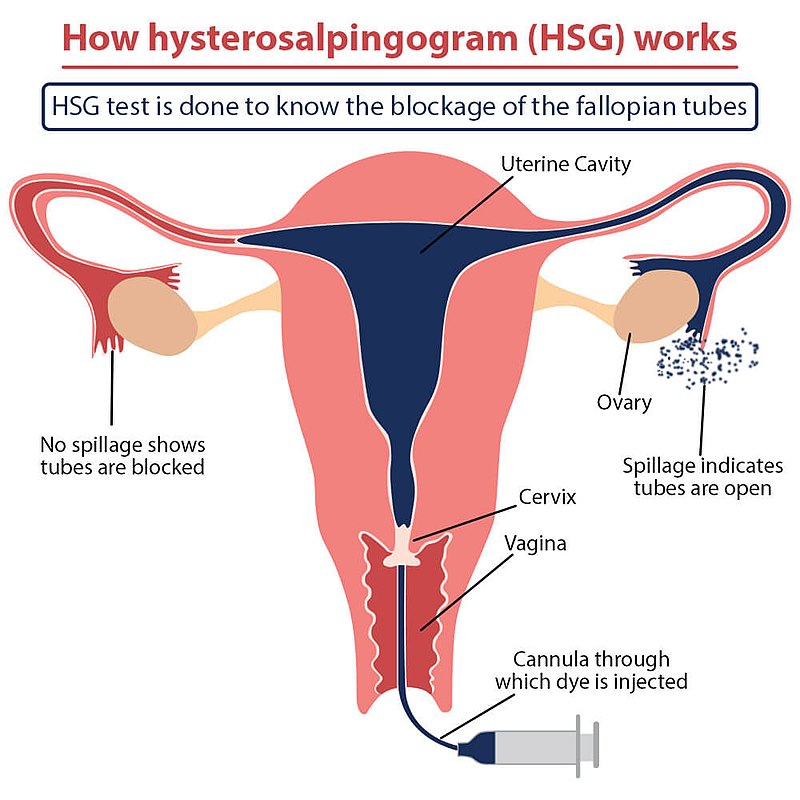One of the important player in the Female Fertility Game is your fallopian tubes. They connect the Ovaries to the uterus. Like a road, it has to be clear and unblock.
During Ovulation, your tube will carry an egg from an ovary to the uterus. This usually happens during the middle of a menstrual cycle.
What can happen?
Blockage in the fallopian tube can happen. And when there is blockage, the sperm cannot get to the egg. Sometimes, the fertilized egg cannot get to the uterus.
Hydrosalpinx – Blocked Fallopian tube or tubes, can cause fluid to build up in the uterus cavity and prevent successful IVF.
A very simple procedure called HysteroSalpingagram, 5 Minutes quick procedure, can be performed to confirm this.
This procedure have saved many women heartache at failed IVF and also money, thus improving their chances (more money, more chances!).
This could be the reason why IVF is unsuccessful (but this is something not all doctors pick up).
Causes
Possible causes of Fallopian Tube Blockage include Scar tissue, previous infection, pelvic adhesions and muscle pinching the tube during a test resulting in a false result.
Type of Blockage
Proximal Obstruction – blockage at the beginning of the tube. Proximal sometimes is not even a blockage because during HSG the muscle around the tube around the tube, pinching off the tube. A repeat HSG may show up with normal fallopian tube.
Non-surgical procedure can be achieved by using a wire to push through the tube to clear the blockage. This procedure can help women avoid expensive IVF. this procedure takes less than 10 minutes and can help you avoid IVF and try naturally.
Distal Blockage – blockage furthest from the uterus, at the far end of the tube. This kind of blockage cannot be corrected without surgical procedure.
Previous Surgery – tubes tied, scar.
Good news
Because you have 2 fallopian tubes, if only one is blocked, you can still get pregnant naturally. And it is not 50% lower.
Diagnosis
An x-ray is taken with dye put in the tube.
Standard HSG
A catheter is threaded through the blood vessel.
Timing
This test can only be done about 6 days into your cycle, after your period and before ovulation. So it is important for you to speak to your doctor early and so you don’t lose an entire month waiting.
The HSG test is performed without needing general anesthesia and you don’t have to go through fasting. It is a very simple procedure and sometimes patient takes a painkiller pill prior the procedure.
Solution
Special Fallopian Tube X-ray “hysterosalpingogram” commonly known as “HSG”
Procedure: 5-10 mins
Wire is pushed through the tube to clear blockage with minimal invasive procedure.
Distal blockage cannot be fixed without surgery.
